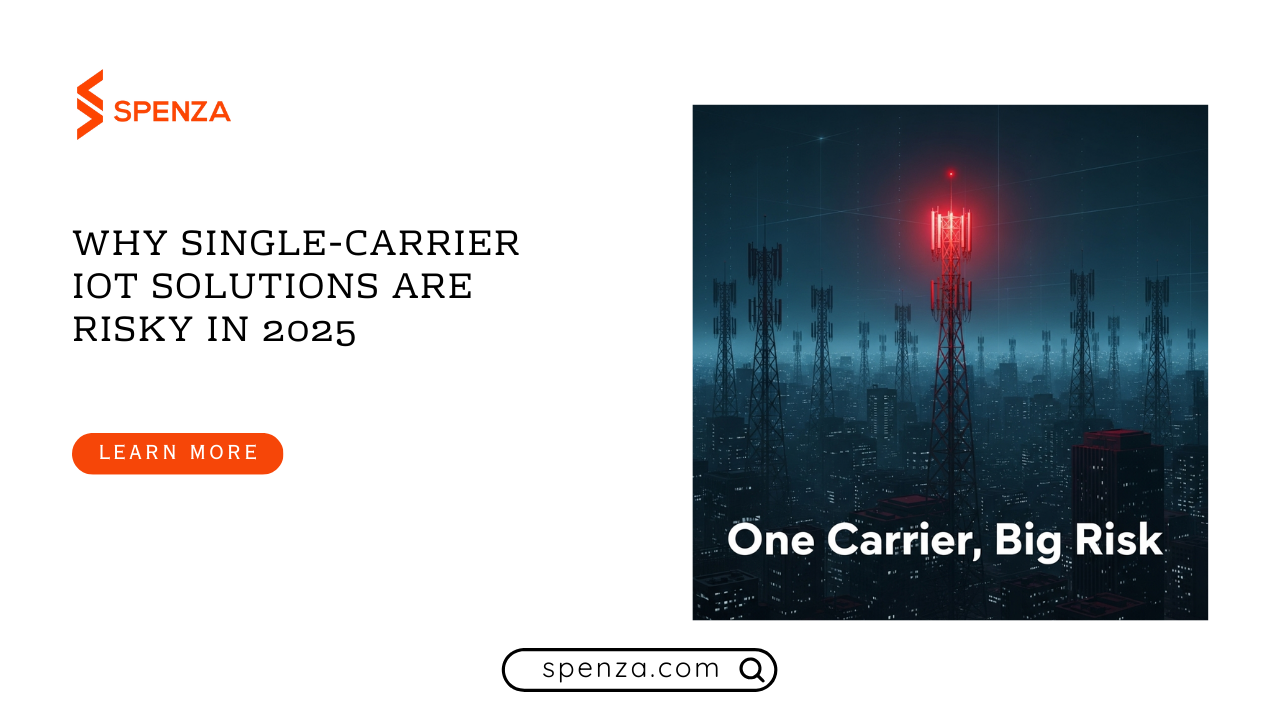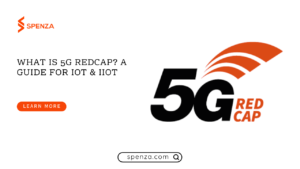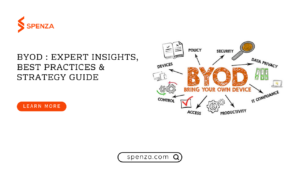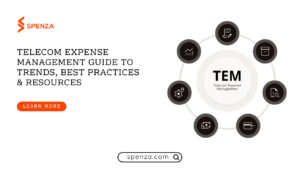TL;DR (for busy CTOs & operations leaders)
- Relying on one mobile network creates a single point of failure across outages, policy changes, contract renewals, and lifecycle events—risk that compounds at scale.
- In Feb 2024, a major network outage disrupted service for 125M+ devices, blocked 92M calls, and stopped 25,000+ 911 attempts, according to FCC findings. Proving how one carrier failure can take down entire IoT fleets and critical systems.
- Network roadmaps shift (e.g., 2G/3G sunsets, spectrum refarming) and can strand devices or force emergency truck rolls if you’re locked to one carrier.
- Modern eSIM/eUICC for IoT (SGP.31/32) enables policy-based multi-profile management and remote switching at scale—foundational for multi-carrier resilience.
- The business math supports diversification: unplanned downtime is a multi-trillion-dollar drain, and a meaningful share of truck rolls are avoidable with better failover and diagnostics.
The Solution: Adopt a modern, resilient IoT multi-carrier connectivity strategy. By using advanced SIM technology like eSIM/iSIM and a unified management platform, you can eliminate single points of failure, achieve global compliance, and maintain commercial leverage.
This approach decouples your hardware from any single network, transforming your connectivity from a potential liability into a durable competitive advantage
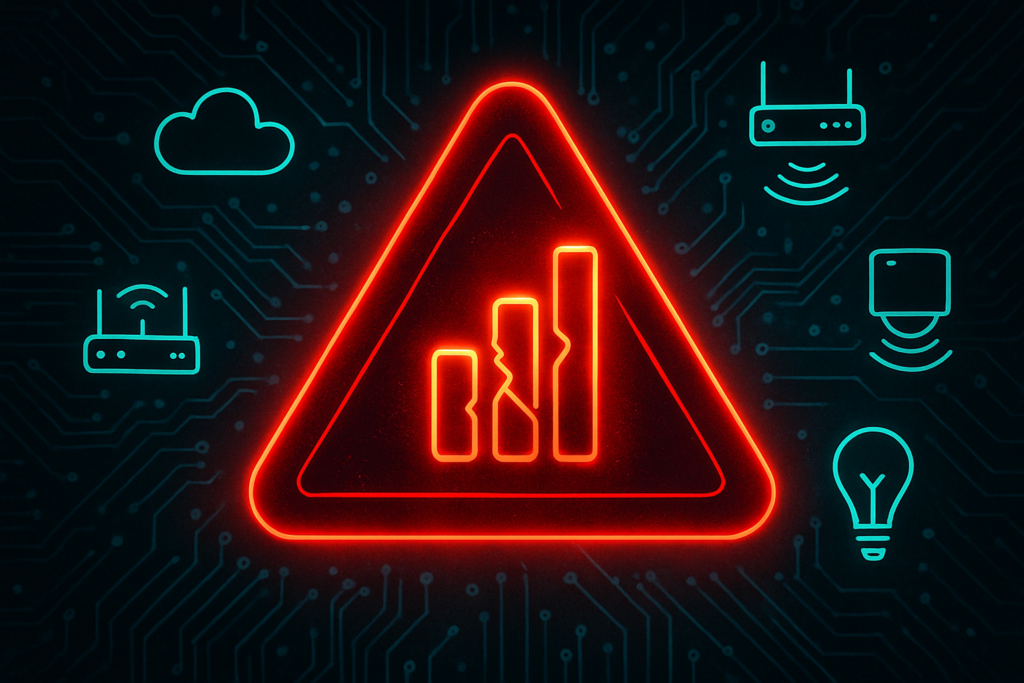
Why “Single-Carrier IoT Risks” matter in 2025
Today’s IoT systems power critical operations across logistics, utilities, and healthcare. When a single network goes down, the impact is immediate and widespread. On February 22, 2024, a major U.S. carrier experienced a 12+ hour nationwide outage, disrupting nearly 92 million calls and blocking 25,000+ 911 attempts.
It was a stark reminder: relying on one network can amplify failure.
These aren’t just technical glitches, they lead to missed data, delayed services, and even regulatory trouble in industries where uptime is critical.
The fix? Multi-network connectivity that keeps devices online even when one provider fails and reduces mean time to restore (MTTR).
For years, the common approach was to connect all IoT devices through a single carrier by contracting with one major MNO to manage an entire device fleet. It seemed simpler and more cost-effective.
But in 2025, that approach creates serious risk. A one-network strategy puts pressure on your technology, operations, and business outcomes. It can hurt reliability, slow growth, and expose you to outages you can’t control.
This post provides a 360-degree analysis of these risks and outlines a resilient, future-proof path forward.
Why the Single-Carrier Model Fails at Scale

What counts as “single-carrier IoT”?
A deployment that binds device identity (IMSI/SIM), network access (APN), and commercial terms to one Mobile Network Operator (MNO) for production traffic—often with fixed provisioning and limited portability.
Common patterns that create fragility
- Single IMSI / static profile per device with no viable backup profile.
- One APN path with central dependencies (e.g., firewall rules, NAT, static routes).
- Contracts that restrict portability, eUICC usage rights, or feasible failover.
- Operational tooling (alerts, automations) tied to one carrier’s portal/feeds.
Why teams choose single-carrier (and why it backfires)
Upfront simplicity and discounts look attractive. But the total risk-adjusted cost rises when you factor outages, roadmap changes, and the loss of negotiating leverage at renewal.
Risks of Single-Carrier IoT
The simplicity of relying on a single mobile network operator (MNO) for IoT connectivity is appealing—but it’s a short-term convenience that creates long-term risk. As your deployment scales, the cracks in this model become critical points of failure.
Here’s a breakdown of the key risks businesses face when locking into a single carrier:
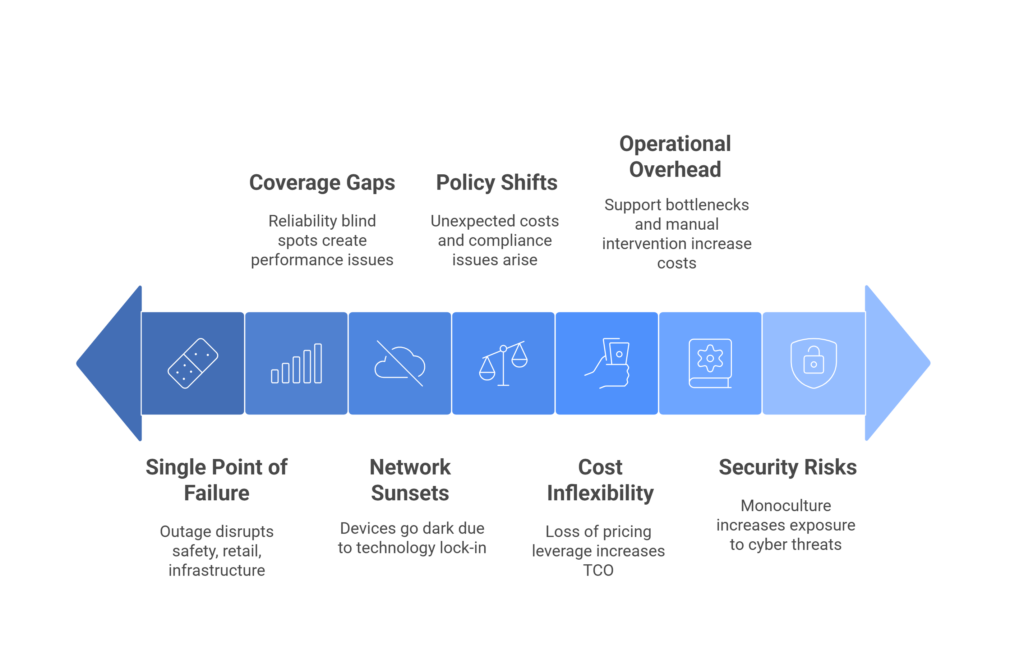
1. Single Point of Failure (SPOF)
When your entire IoT fleet relies on a single carrier, any outage due to a fiber cut, cyberattack, or misconfiguration can bring everything offline, disrupting safety systems, retail operations, and infrastructure nationwide.
With no failover path, your uptime and your brand are at the mercy of a single provider.
2. Coverage Gaps and Performance Limitations
No single carrier offers perfect coverage everywhere. Dead zones in rural areas, basements, or industrial sites create reliability blind spots. Even when there is signal, IoT traffic is often deprioritized during congestion, leading to latency or dropped packets, especially in real-time use cases like fleet tracking or remote monitoring.
3. Network Sunsets and Technology Lock-In
Carriers frequently phase out legacy networks (like 2G or 3G) to free spectrum for 5G. If your devices rely on a now-retired network, they can go dark overnight.
One real-world example: a 2G shutdown left 100,000+ devices disconnected. Each carrier also chooses which technologies (e.g. LTE-M, NB-IoT) to deploy and where meaning your product roadmap is tied to their decisions, not yours.
4. Policy Shifts and Roaming Uncertainty
Carrier policies aren’t static. Changes to pricing, roaming agreements, or data throttling rules can create unexpected costs or compliance issues, especially for cross-border deployments. Regulatory bodies like the EU’s BEREC are actively reviewing permanent roaming rules for IoT, adding even more complexity.
5. Cost Inflexibility and Vendor Lock-In
With only one carrier, you lose pricing leverage. Over time, total cost of ownership (TCO) drifts due to hidden expenses like SIM swaps, emergency field visits, and engineering time spent managing bespoke carrier integrations.
A single truck roll for connectivity issues can cost $1,000–$2,500 or more, depending on region and urgency.
6. Operational Overhead and Support Bottlenecks
When your fleet is tied to one carrier, troubleshooting often requires waiting on their support systems and diagnostics. If a field visit doesn’t resolve the issue, costs rise fast, especially when devices need to be manually replaced or reconfigured.
7. Security and Resilience Risks
Relying on a single network creates a “monoculture” that increases exposure to cyber threats and outages. As noted in the GSMA’s IoT Security Guidelines, diversity in infrastructure is a key principle of resilience. A multi-carrier setup offers redundant pathways, reducing the chance that one breach or failure compromises your entire system.
Single-carrier IoT architectures are fragile by design. From outages and dead zones to pricing inflexibility and policy shifts, the risks multiply as your deployment scales. In contrast, multi-carrier connectivity adds resilience, improves coverage, cuts downtime, and gives you control—not just over costs, but over your future.
The solution? A multi-carrier approach that keeps your IoT fleet connected, even when one network goes down.
What to Do Instead: A Practical Multi-Carrier Model
1. Design for Carrier Diversity
Build your IoT solution to support multiple carriers from the start. Devices should automatically switch networks based on signal strength, connection failures, or SLA breaches—minimizing downtime and ensuring consistent service.
2. Use eSIM with Remote Management
With eSIM (based on GSMA’s SGP.31/32 standards), you can remotely download and switch between carrier profiles—no physical swaps needed. This allows full control over connectivity across your entire fleet, from one system.
3. Implement Smart Failover
Keep at least two active profiles per device. Set rules to switch carriers based on poor signal, failed connections, or specific regions. Use guardrails to control when and how switches happen to avoid instability.
4. Negotiate Flexible Contracts
Make sure your carrier contracts allow:
- Switching profiles freely (no lock-in)
- Support for multiple carriers on one device
- SLAs tied to actual performance metrics, like connection success or uptime
- Compensation for major outages or failures
These terms give you control, flexibility, and leverage, especially as your fleet grows.
A resilient IoT strategy in 2025 means more than one network, smart switching rules, and contracts that don’t trap you. With eSIM, policy-driven failover, and multi-carrier support baked in, you can keep your devices online, your data flowing, and your business running—no matter what happens to any one provider.
Single-Carrier vs. Multi-Carrier IoT (2025)
| Dimension | Single-Carrier | Multi-Carrier |
|---|---|---|
| Resilience | Single point of failure | Distributed risk with automated policy-based failover |
| Coverage Assurance | Static coverage; limited to one network | Dynamic profiles per region or device group |
| Technology Roadmap | Locked to one carrier’s timeline and network evolution | Flexibility to adapt across multiple roadmaps and tech transitions |
| Mean Time to Repair | One support path; slower resolution | Faster recovery via parallel escalations and local failover |
| Lifecycle Cost (TCO) | Lower upfront; hidden costs later (e.g. truck rolls, SIM swaps) | Predictable costs; better control and leverage across vendors |
| Operational Burden | More field visits and escalations | Remote remediation and profile switching reduce on-site fixes |
| Global Scalability | Limited by roaming restrictions and compliance issues | Enables local compliance with remote switching to in-country carriers |
| Commercial Leverage | High vendor lock-in; low negotiation power | Competitive edge from remote switching and pricing flexibility |
| Troubleshooting | Siloed tools and support | Unified management across all networks (“single pane of glass”) |
| Future-Proofing | Tied to carrier’s legacy shutdowns and tech bets | Technology-agnostic; supports best available network |
| Network Reliability | Outage = 100% fleet downtime | Built-in redundancy for continuous service |
Impact by Industry: Why Single-Carrier IoT Fails in the Real World
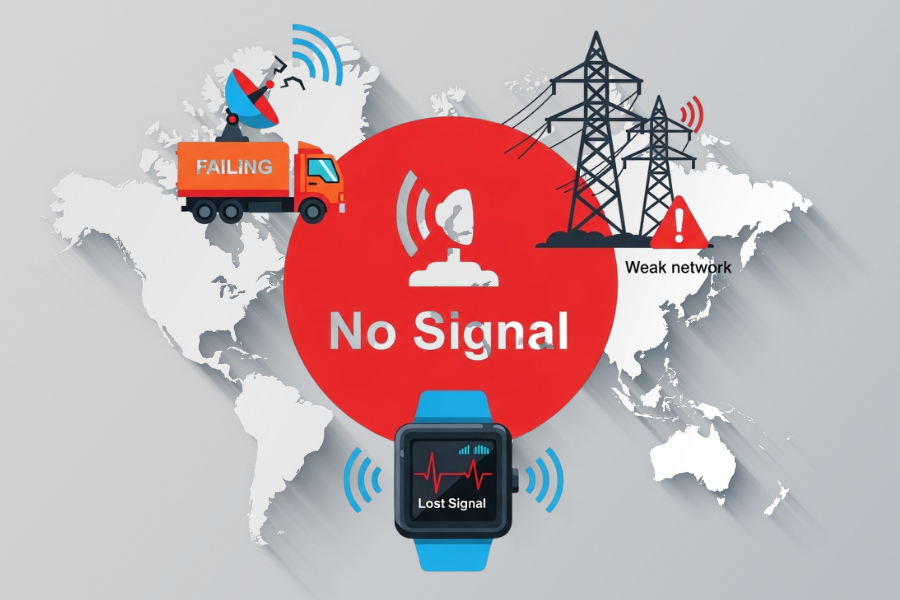
🚚 Logistics (Fleet, Cold Chain, Asset Tracking)
- Risks: Lost telemetry leads to incorrect ETAs, missed temperature alerts, and data dropouts in depot dead zones.
- Why it matters: Even short outages across thousands of moving assets lead to SLA penalties, idle labor, and costly rework. Downtime compounds across operations.
- Solution: Use dual profiles per device with preferred carriers per route. Apply policy-based fallback in weak-signal zones and buffer data during gaps.
⚡ Utilities (AMI, Grid, Distributed Assets)
- Risks: Missed meter reads, failed remote commands, and signal loss during storm, especially in centralized backhaul points.
- Why it matters: Field visits spike when telemetry fails. Studies show multi-visit jobs increase costs by 40–50%. Outage resilience directly reduces Opex.
- Solution: Distribute carrier profiles by grid segment. Enable local caching, priority QoS (when available), and emergency switch policies for weather events.
🏥 Healthcare (Remote Monitoring & Clinical IoT)
- Risks: Interruptions to patient monitoring, lost alerts, and blocked emergency escalations during outages.
- Why it matters: Healthcare IoT requires higher uptime standards than consumer-grade devices. Even one missed alert can have a life-threatening impact.
- Solution: Enforce rigorous failover testing, stricter switching thresholds, and out-of-band alert paths. Layer monitoring across multiple network paths.
Spenza’s Approach to Solving Single-Carrier IoT Risks
Spenza provides a complete, future-proof architecture that solves the risks of single-carrier IoT. Our platform combines flexible connectivity, simple management, and powerful tools to help you scale your business safely and efficiently.
Here’s how Spenza helps you build a resilient IoT deployment:
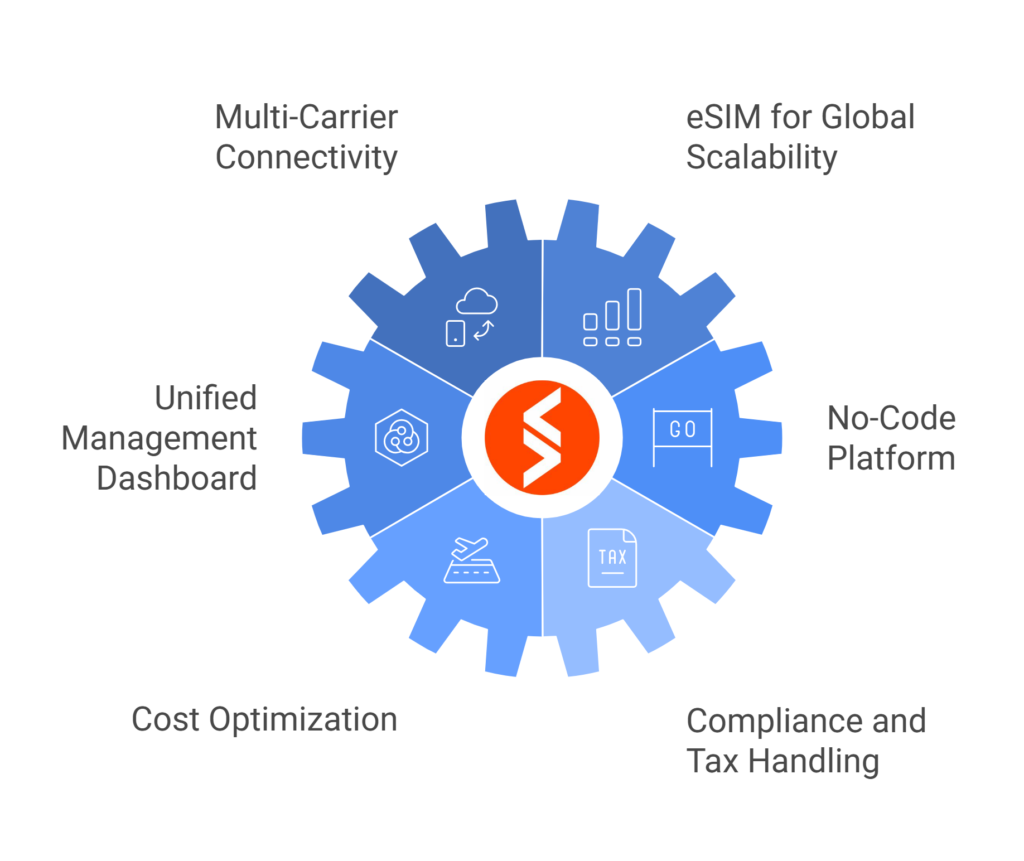
- Multi-Carrier Connectivity & Automatic Failover: Spenza isn’t tied to one network. We provide access to multiple major carriers through a single SIM/eSIM. This creates
built-in redundancy. If one carrier experiences an outage, your devices automatically switch to another network, ensuring your service stays online and your business keeps running. - eSIM for Global Scalability: Spenza uses modern eSIM technology, which allows you to switch carriers remotely without ever touching the device. This eliminates vendor lock-in and solves the “single SKU nightmare”. You can manufacture one version of your product and activate it on the correct local network anywhere in the world, simplifying logistics and enabling compliant global expansion.
- A “Single Pane of Glass” to Manage Everything: Our platform provides a unified dashboard to control your entire fleet of devices across all carriers. You can manage services, monitor wireless spend, automate operations, and track inventory from one place. This simplifies operations and gives you complete visibility and control, reducing complexity and labor costs.
- No-Code Platform for Fast Time-to-Market: With Spenza’s pre-integrated no-code platform and Shopify app, you can launch a fully branded online store to sell your connected devices in as little as 7 days. This allows you to monetize your products from day one without needing a team of engineers, accelerating your revenue and global reach.
- Optimized Costs and “Fit-for-Purpose” Plans: Our curated marketplace offers a range of connectivity plans from multiple operators, allowing you to find the perfect fit for your device’s needs without complex contract negotiations. Features like intelligent pooling and real-time analytics ensure you run a profitable connectivity business by optimizing costs and ensuring every connection is margin-positive.
- Built-in Compliance and Tax Handling: Spenza helps you navigate the complex world of global telecom regulations. We handle the “boring stuff” by providing pre-integrated tax and regulatory filings to ensure you stay compliant with telecom, tax, and privacy rules as you grow.
This de-risks your expansion so you can scale with confidence, avoiding fines or shutdowns from regulators.
Case Example: How Multi-Carrier IoT Prevents Real-World Downtime
Imagine a global logistics company running a fleet of IoT-connected trucks. With a single-carrier solution, an outage in one region could leave thousands of shipments untracked, disrupting supply chains.
With Spenza’s multi-carrier model, those same trucks automatically switch to another available carrier, ensuring uninterrupted operations, accurate tracking, and customer satisfaction. The difference between single- and multi-carrier IoT can mean millions in avoided losses.
Conclusion: From Connectivity Risk to Competitive Edge
Choosing an IoT connectivity strategy is not just a short-term decision. It’s a strategic foundation that will shape your business’s resilience, growth, and financial performance for years to come.
The single-carrier model may seem simple at first, but it carries serious risks: network outages, vendor lock-in, and barriers to global expansion. These issues can severely limit your IoT success.
A multi-carrier strategy, on the other hand, turns connectivity into a competitive advantage. With network redundancy, advanced SIM technology, and centralized management, your business can deploy faster, scale globally, and operate more reliably and cost-effectively than competitors stuck on a single network.
The message is clear: single-carrier IoT is too risky. The future belongs to resilient, multi-carrier platforms.
If you’re still relying on just one mobile network, 2025 is the year to change. The technology, standards, and tools are already here.
Spenza helps you make the switch with a proven, step-by-step approach from pilot to full-scale deployment.
FAQs
Not if implemented with proper policy controls and observability. In fact, diversification often increases leverage during contract renewals. Plus, savings from fewer truck rolls and shorter outages typically outweigh any added overhead.
When one network becomes unavailable, IoT devices seamlessly connect to the next best carrier often within seconds without any manual intervention.
Start with a cohort pilot: add a second profile to a subset of your fleet, track per-carrier KPIs, test failover during maintenance windows, and then scale by region or device type. Use procurement cycles to secure portability and SLA protections.
Industries like logistics, healthcare, energy, manufacturing, and smart cities see the greatest benefits because their operations rely heavily on uninterrupted connectivity.
Yes. Many devices can be migrated using eSIMs or by re-provisioning existing SIMs through Spenza’s centralized platform.
Ready to Future-Proof Your IoT Connectivity? Book a free demo to see how multi-carrier orchestration can work for your company.

